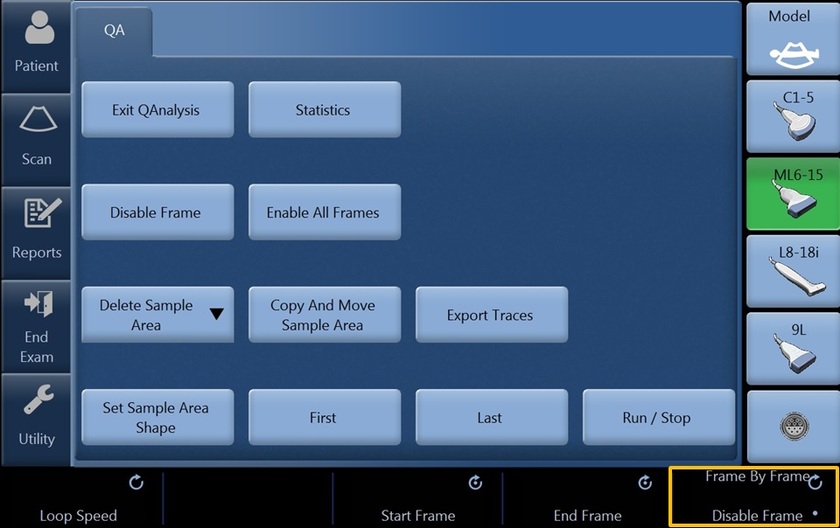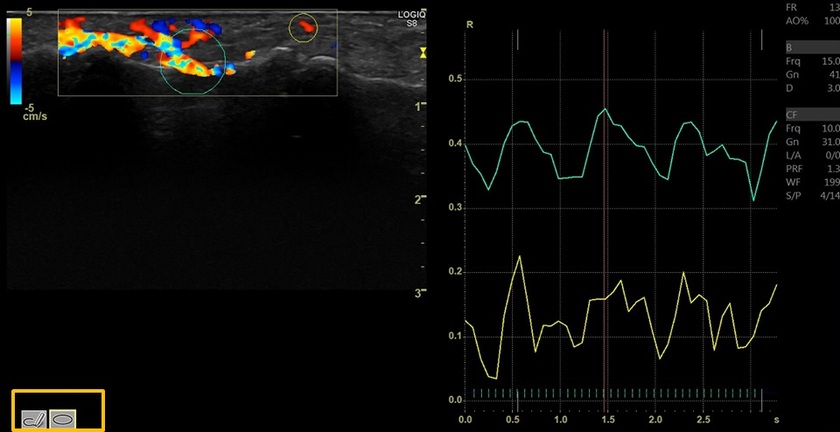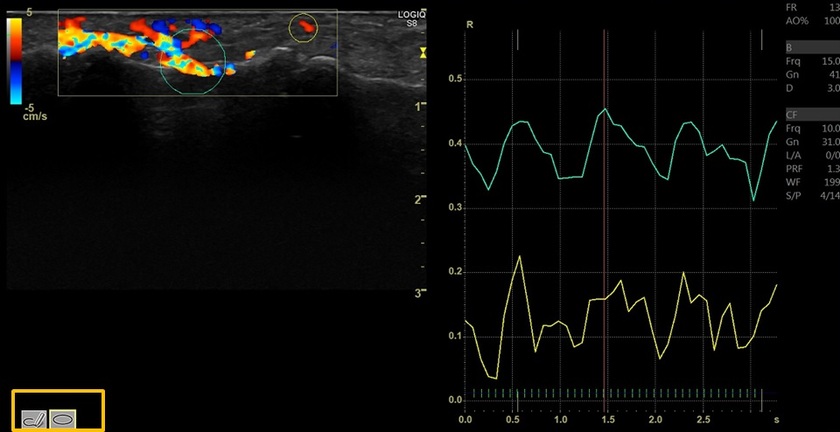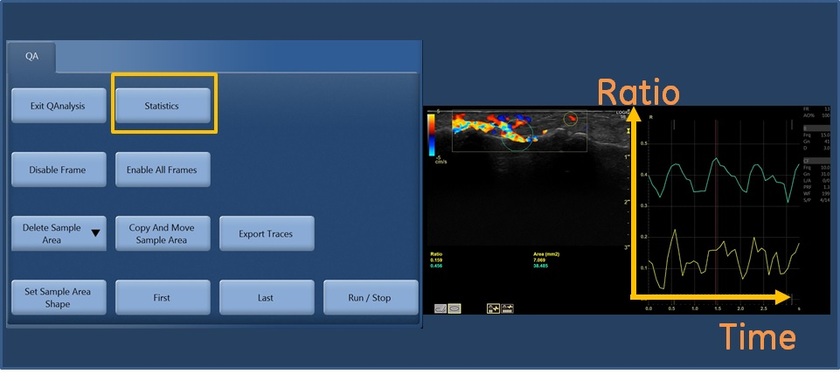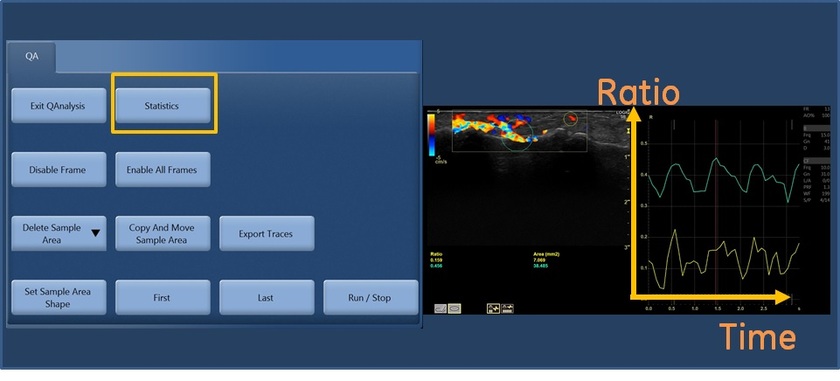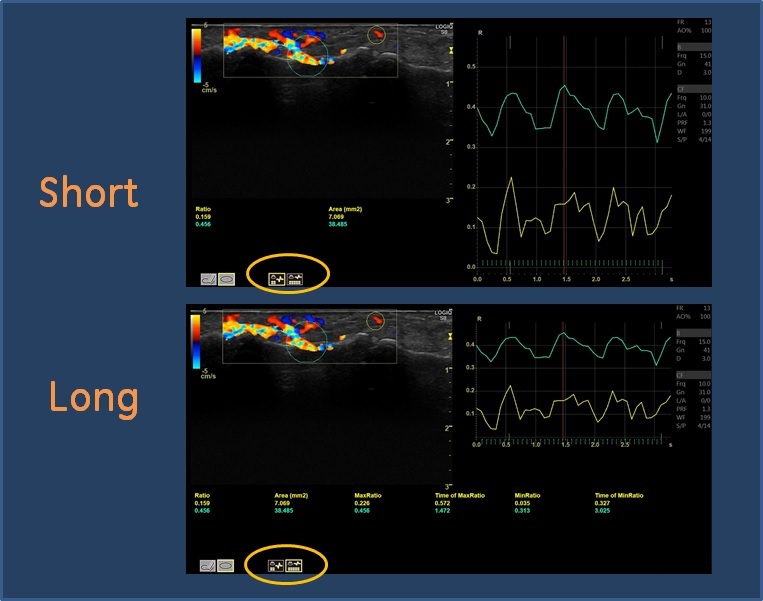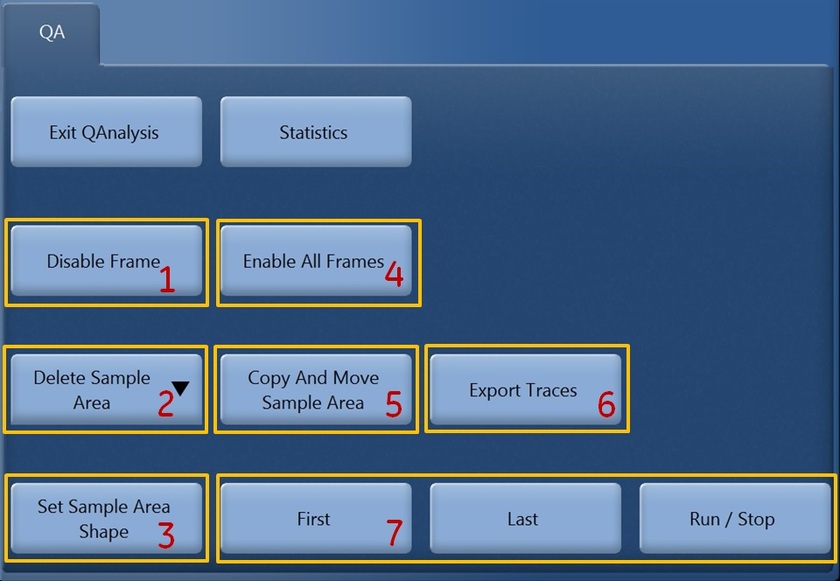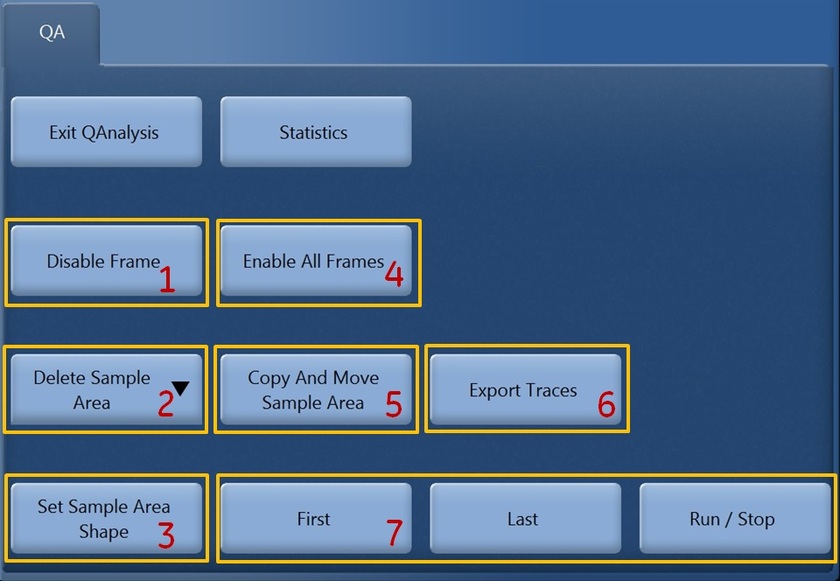1. Acquire a 3-5 sec color clip within the area of interest.
2. Recall color clip from Thumbnails. On Touch Panel (TP), select Q-Analysis to begin Color Quantification.
3. System will acquire all color information from clip. Do not push any buttons until system is done acquiring all the information necessary to quantify color data and warning label on bottom of screen is no longer shown. (Cine Computation in progress! Please wait until operation is completed). Note: Avoid using the Quantification Tool on a Color (PDI) clip longer than 400 frames. Color (or PDI) loops acquired without CrossXBeam™ process faster than those with CrossXbeam ON.



